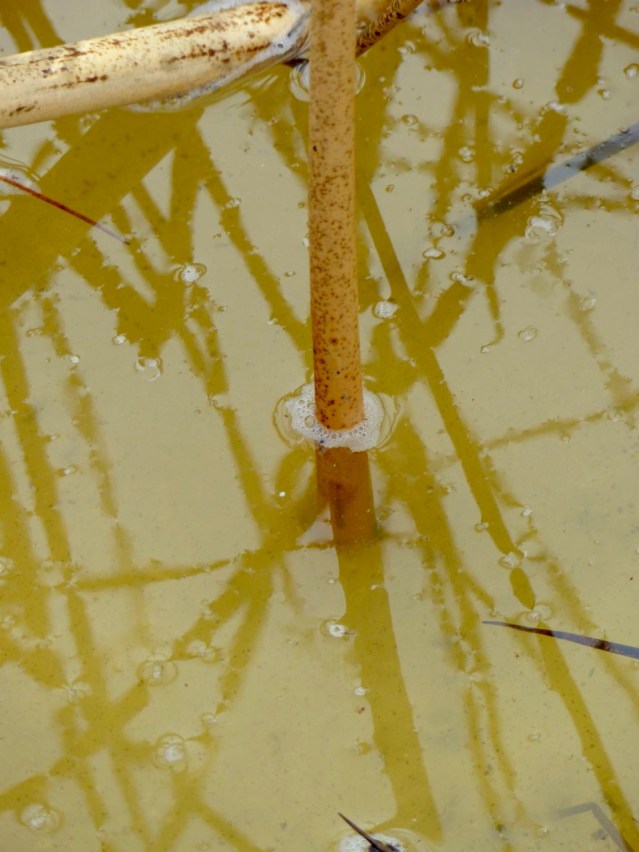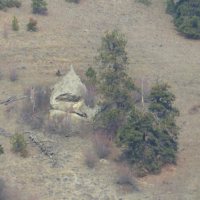We are being written.

And we are being read.

You can do it in any order. The order is what we bring to this environmental bonding. This:

It can be followed by this:

Or by this:
Or in any other order. If we are looking at this pond in the unfolding sequence of linear time, then it’s the reverse. But it doesn’t matter. By putting them in sequence they make a narrative. It’s enough to make narrative very troubling. It is, after all, a pond. It’s doing something other than narrating. As a reader and a writer, that makes me take note.

Blooming, opening, waving, welling, wetting, reflecting, lighting (and so on), these are all things that the pond is, but not narrating, and not ‘doing.’ Those are both behaviours that use the pond as a setting. It’s not a setting. It’s everything here at once, as humanly observed.

That’s not to say it is a human narrative, as humans are understood in 21st century culture, as independent actors who build up community and world view through the intersections of random information.

The intersections are hardly random. They are all happening at once. The water beetles above, and the lily pads below, floating among illusory clouds that the mind reads as those parts of cognition without access to words, and the part with access to words reads as illusion, understanding, metaphor, data, or however else it has been trained by, well, language.

Whatever the case, these lilies, this blue sky and these clouds…

… and this algae and oily film…

… and the following web of intersections…

… are all happening at once. They are the same pond. That’s not narrative. Narrative is a way of taking it apart and sequencing it. Even science writing does that, in the hope of putting it back together with greater depth and presence, now that it has entered language. That is the oldest of Western concepts, on which almost all our art, and virtually all of our writing, is based. It recreates the world as something else. For example:

It’s not about a red wheelbarrow. Or chickens. It’s a bit like yoga. Here’s some in my city, Vernon.

Note the slogan: “Life is the journey, not the destination.”

Nice. But it’s a trick. Look at the last remnants of the wetlands this city’s bricks have replaced…

… and just consider the sorting that has gone on with the false choice between “journey” and “destination.” It could be that life is none of those things, and a narrative of Thule reeds leaching into meltwater in the late winter, that then ponds on top of a shelf of ice, has nothing to do with a sequence of events. That is a form of reading learned from reading novels and scientific cause and effect. It’s not the kind of reading that comes from reading poems not beholden to those things, and not the kind of reading that comes from allowing a poem to reveal itself in its own language, which reveals a deep form of human nature, far, far older than language or even human bodies.

And all of it is alive in us and around us, the thules…

…and language…

We would be honest to accept poetry as a real thing in the world.
And would do ourselves a favour not to accept its subjugation to either science, fictional narratives, or forms of language that signify “meaning.”
… and all of it all at once.

Sedges at dusk.
A poem has no meaning. It strives for none. It can, however, be used to create meaning, and the narrative that lies beneath it.

But that is a culturally specific use and not how a poem rises in the gaps we leave for it to speak for itself. The inability to create a narrative out of the world, in any sustainable fashion, leads to a lot of gap-filling, as evidenced below. A building is more space than substance, language hopes we might say, but in a building, of course, space is substance, which is only revealed when it loses narrative.

Yes, we can “make” a narrative, and fill that space, but it will be a narrative that leaves the space and goes somewhere else. It is one of the lessons I learned from the East German playwright Stefan Schütz. With his Marxist background (and as the direct heir of Bertolt Brecht’s tradition), he pointed out to me with great patience as we sat in a café on the shore of the Baltic, that no story could be written about the Heiligenhafen Holiday Park we were sitting in, because it had no story. I disagreed, in good Canadian Creative Writing style. I proposed a number of stories, but he’d have none of it. For him, a story had to be present; humans were manipulated by it, rather than manipulating it for their own delight. Over the next weeks, I travelled East, and found it.

This door in Pirna is as terrible as Auschwitz. You don’t want to go through it, but if you do, you will come out a different person. Not a metaphor.
It was a harsh and life-altering lesson. Narrative is terrible stuff when it ceases to be narrative, or when it treats you the way Western cultural narratives treat the Earth. We cannot claim innocence, especially those of us who live in colonial states, but one thing we can do is provide space for non-narrative. Take a look at this stone in the Cariboo.

Sure, it is covered with a datable series of lichens, some alive and many now dead, and is covered by plants rooted in the rain it gathers and growing in the sun it collects and radiates, but they are not doing so as narrative, and our bodies (and the non-linguistic mind) does not follow it as narrative. The plant, after all, is neither seed, stem, leaf, root, flower or seed, but all of them at once. This “being” as “being” goes to the heart of the Indigenous-Development divide in Canada. It is a distinction between “writing” a poem, as in “authoring” it out of one’s “creativity” and “arranging words in such a way that a poem appears among them” or “noticing when one is in the presence of poetry” and providing a channel for it. I do not mean inspiration. All of this can happen in words (or scientific assessments or mathematical equations) but it does not need to, and that is only a specific and limited case. Poems don’t do our bidding. They are no different than this:

We can use words to try to intensify what we read there, to comment on it, to guide people into the moment that caught us, and so on, but what was there was already there, called up by a moment of sight, and as every indigenous person knows, and every speaker of English has at their fingertips, sight is a response to light-ness (on which attention lights). What’s more, is sight is arranged and sorted before it reaches the mind. For instance, we can call it…

… and focus our joint attention on particular qualities of wholeness. We could add a few hundred words more. It makes no difference. No matter what we do, to write a poem is to read it:

And then to read ourselves through this reading. This is profoundly indigenous. It is not, actually, writing at all. Writing is a form of artificial intelligence.
Categories: Artificial Intelligence, Arts, Earth, First Peoples, Gaia, Nature Photography, Spirit, Urban Okanagan














O yes: “allowing a poem to reveal itself in its own language, which reveals a deep form of human nature, far, far older than language or even human bodies.” SO well said.
LikeLike
Thanks! I hope to find way to say it better, and more simply.
>
LikeLike